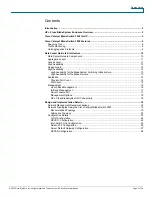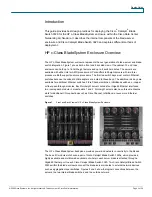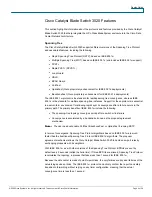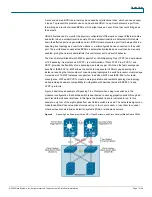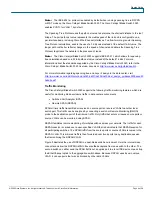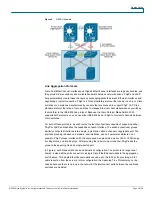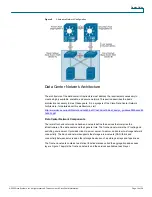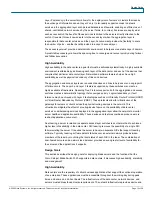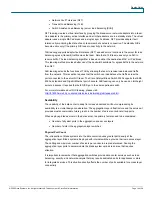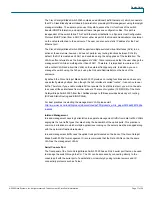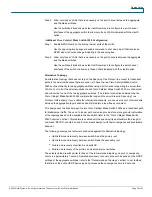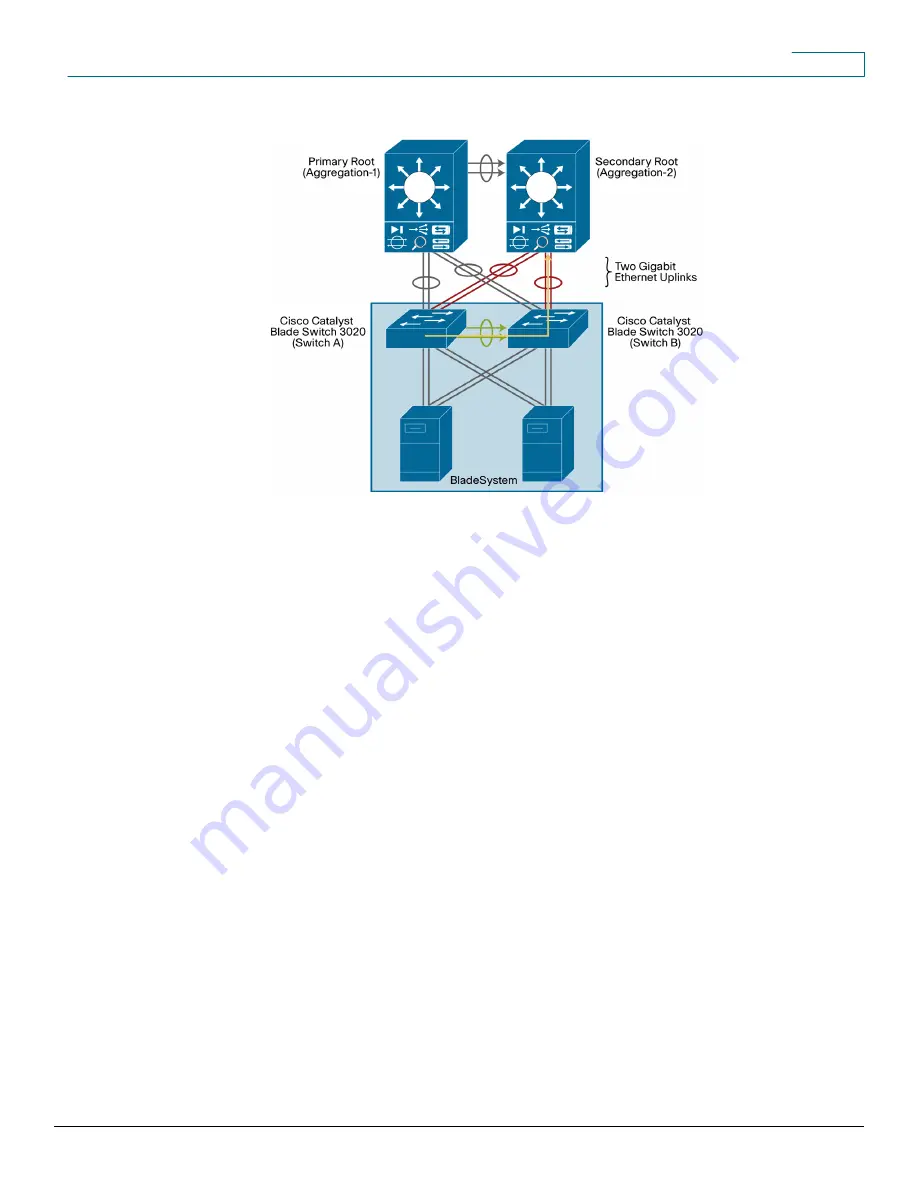
Design Guide
Figure 5.
RSPAN Example
Link Aggregation Protocols
Cisco Fast EtherChannel interfaces and Gigabit EtherChannel interfaces are logically bundled, and
they provide link redundancy and scalable bandwidth between network devices. PAgP and LACP
help automatically create these channels by exchanging packets between Ethernet interfaces and
negotiating a logical connection. PAgP is a Cisco proprietary protocol that can be run only on Cisco
switches or on switches manufactured by vendors that are licensed to support PAgP. LACP is a
standard protocol that allows Cisco switches to manage Ethernet channels between any switches
that conform to the IEEE 802.3ad protocol. Because the Cisco Catalyst Blade Switch 3020
supports both protocols, you can use either IEEE 802.3ad or PAgP to form port channels between
Cisco switches.
For both of these protocols, a switch learns the identity of partners capable of supporting either
PAgP or LACP and identifies the capabilities of each interface. The switch dynamically groups
similarly configured interfaces into a single, logical link, called a channel or aggregate port. The
interface grouping is based on hardware, administrative, and port parameter attributes. For
example, PAgP groups interface with the same speed, duplex mode, native VLAN, VLAN range,
trunking status, and trunking type. After grouping the links into a port channel, PAgP adds the
group to the spanning tree as a single switch port.
In Figure 6, each blade switch uses an alternative configuration. The switch is no longer dual
homed; instead all the ports are put into a single Cisco EtherChannel uplink to the aggregation
switch above. This single EtherChannel uplink can use up to the full 8 ports, providing a 2-to-1
cable reduction from the servers. In this configuration, the Spanning Tree Protocol may not be
needed because there is no loop in the network if the interconnect ports between the two blade
switches are disabled.
© 2008 Cisco Systems, Inc. All rights reserved. This document is Cisco Public Information.
Page 9 of 28


